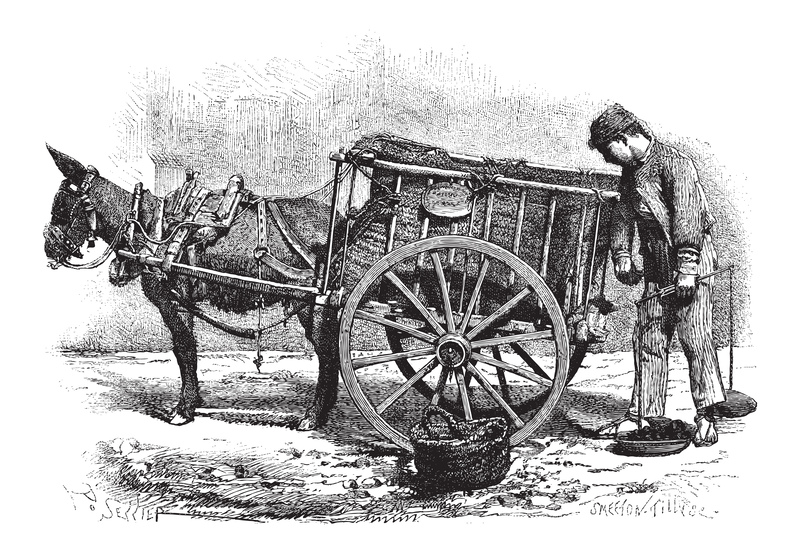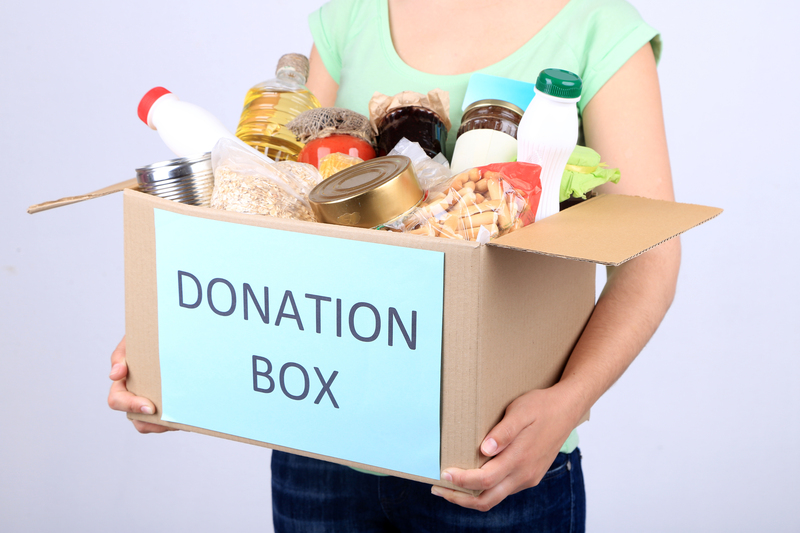Navigating Plastics: Which Ones to Avoid for a Healthier Life
In our modern world, plastics play a huge role in our daily lives. From food containers and bottles to packaging and household goods, these synthetic materials surround us. However, not all plastics are created equal -- some can leach harmful chemicals, potentially impacting our health and the environment. Understanding different types of plastics and knowing which ones to avoid is essential for anyone aiming to make safer choices for themselves, their families, and the planet.

An Overview: Why Should We Be Concerned About Plastics?
Plastics are incredibly versatile, lightweight, and durable. But concerns arise from their chemical composition, especially when certain plastics come in contact with food, beverages, or our bodies. Research has linked specific plastic compounds to hormonal disruptions, cancer risks, reproductive issues, and environmental damage. Navigating the world of plastics requires knowledge and vigilance, particularly when choosing products that touch what you eat and drink.
The Misconceptions and the Importance of Plastic Identification
Many consumers believe that all plastics are similar or safe once certified. In reality, plastics are classified into seven different categories, marked with the Resin Identification Code (RIC) -- those numbers inside the triangle usually found on the bottom of products.
- Knowing these numbers and their health implications is the first step in navigating safe plastic choices.
- Some plastics are considered relatively safe, while others are prone to leaching hazardous substances, especially when heated or exposed to sunlight.
Different Types of Plastics and Their Identification Codes
Below is an outline of each plastic type, their common uses, and their safety profiles. This will help you identify which plastics to avoid in your daily life.
Number 1: PET or PETE (Polyethylene Terephthalate)
- Common Uses: Water and soft drink bottles, cooking oil bottles, food packaging.
- Advantages: Lightweight, clear, generally considered safe for single use.
- Risks: May leach antimony, a suspected carcinogen, especially if exposed to heat or reused multiple times.
Best Practice: Use only once and avoid refilling. If a PET bottle is left in hot cars or reused, the risk of leaching increases.
Number 2: HDPE (High-Density Polyethylene)
- Common Uses: Milk jugs, detergent bottles, juice bottles, grocery bags.
- Advantages: Sturdy, does not leach chemicals easily, widely recycled.
- Risks: Considered one of the safest plastics for food and beverage storage.
HDPE is generally safe, but best to avoid old or scratched containers which could harbor bacteria or previous contaminants.
Number 3: PVC (Polyvinyl Chloride) - A Plastic to Avoid
- Common Uses: Food wraps, cooking oil bottles, plumbing pipes, vinyl flooring, shower curtains.
- Advantages: Flexible, resilient, cheap.
- Risks: PVC can release dangerous chemicals such as phthalates and vinyl chloride, both linked to hormonal disruption and cancer. Not recyclable in most communities.
Avoid PVC wherever possible, especially for food contact or children's toys.
Number 4: LDPE (Low-Density Polyethylene)
- Common Uses: Bread bags, frozen food bags, grocery bags, food wrap.
- Advantages: Flexible, relatively low risk of leaching.
- Risks: May not always be recyclable; avoid heating (such as in the microwave).
Generally considered one of the safer plastics, but limit use with heat or fatty foods to reduce risks.
Number 5: PP (Polypropylene)
- Common Uses: Yogurt containers, straws, bottle caps, some baby bottles.
- Advantages: Resistant to heat, generally recognized as safe for food and drink.
- Risks: Limited. Can be safely reused, but cracked containers should be discarded.
Number 6: PS (Polystyrene) - Another Plastic to Avoid
- Common Uses: Takeout clamshells, coffee cups, plastic cutlery, foam packaging (commonly called Styrofoam).
- Advantages: Lightweight and inexpensive.
- Risks: Polystyrene can leach styrene, a probable carcinogen, especially when used for hot foods or drinks. Difficult to recycle.
Avoid polystyrene for food and beverage whenever possible, particularly with heat.
Number 7: OTHER - Mixed or Unknown Plastics
- Common Uses: Baby bottles, sippy cups, large water bottles, eyewear, electronics.
- Advantages: Varied.
- Risks: May contain BPA (Bisphenol-A) or other endocrine-disrupting chemicals. The category includes polycarbonate and bioplastics, making it less predictable.
BPA is linked to a variety of health effects, including reproductive harm, heart issues, and developmental delays in children.
The Plastics to Avoid: A Quick Reference List
If you want to prioritize your health and limit exposure to problematic chemicals, remember:
- Skip #3 (PVC): Contains hazardous phthalates and carcinogenic compounds.
- Steer clear of #6 (Polystyrene): Can leach potentially cancer-causing styrene.
- Be wary of #7 (OTHER): Often includes plastics with BPA or other risky additives.
When in doubt, avoid plastics labeled "PC" (Polycarbonate).
While #1 (PET) is widely used for beverages, avoid repeated use and exposure to heat.
Health Dangers Associated with Risky Plastics
What do the studies say about plastics to avoid? Here's a snapshot of the risks:
- Hormonal Disruption: Chemicals like BPA and phthalates can interfere with the endocrine system, affecting fertility and development.
- Cancer Risks: Vinyl chloride and styrene are classified as carcinogens -- regular exposure, even in small doses, can increase the risk over time.
- Neurodevelopmental Effects: Children and fetuses are especially vulnerable, with evidence linking certain plastic chemicals to developmental delays.
- Immune and Metabolic Disorders: Ongoing research links microplastic exposure to immune dysfunction and obesity.
Reducing use of the riskiest plastics benefits not just individual health, but also the greater ecosystem -- as these plastics frequently end up polluting waterways and harming marine life.
Environmental Concerns: Plastics Beyond Health
Plastics to avoid are also those that cause the most environmental damage:
- Single-use plastics (many of which are #1, #4 and #6) are often not recycled and persist in the environment for centuries.
- PVC and polystyrene produce dangerous toxins during manufacturing and decomposition.
- Microplastics, born from the breakdown of these materials, pollute water supplies and enter the food chain.
Choosing safer plastics means protecting the planet for future generations as well as yourself.
Practical Tips for Avoiding Unsafe Plastics in Daily Life
1. Learn Your Plastic Numbers
Check product packaging, containers, and bottles for the resin code. It is usually a number inside a triangle, sometimes accompanied by the abbreviation. Avoid codes #3, #6, and #7 whenever possible, particularly for anything involving food or water.
2. Switch to Safer Alternatives
- Glass: Non-reactive, long-lasting, safe for hot and cold uses.
- Stainless Steel: Excellent for water bottles, lunch boxes, and cookware.
- Ceramic and Bamboo: Good for dishes and serving ware, but make sure it's food-grade and free from harmful glazes.
- Silicone: High-quality food-grade silicone can be a safer alternative to some plastics for storage and baking.
3. Never Heat Foods in Plastic
Heat increases the likelihood of chemical leaching, especially in "to avoid" plastics like #3, #6, and #7. Always use glass or ceramic in the microwave or oven.
4. Be Mindful of Old or Damaged Plastic Items
Even safer plastics like #2 (HDPE) and #5 (PP) can break down over time. Dispose of containers that are scratched, cloudy, or cracked as they may begin to release more chemicals.
5. Reduce Single-Use and Disposable Plastic Items
- Opt for reusable alternatives.
- Bring your own bags, bottles, and containers when shopping.
- Say no to straws, foam takeout boxes, and polystyrene cups.
6. Focus on Kids and Babies
- Young children are more vulnerable to chemical exposure.
- Avoid plastic baby bottles, sippy cups, and toys labeled #3, #6, or #7.
- Select glass, stainless steel, or BPA-free plastic (preferably #5 Polypropylene) for baby products.

Answers to Common Questions About Navigating Plastics
Which plastics are safe for food?
HDPE (#2) and PP (#5) are widely recognized as the safest plastics for food storage and handling. LDPE (#4) is also relatively safe but should not be used with hot foods or for repeated heating. When in doubt, choose glass or stainless steel instead.
Are all BPA-free plastics safe?
BPA-free does not always mean risk-free. Many manufacturers substitute BPA with BPS or BPF, which are related chemicals and may pose similar health risks. Reduce all plastic use, especially in food and drink containers, for the most safety.
How do I reduce plastic exposure at home?
- Cook at home using fresh ingredients and store leftovers in non-plastic containers.
- Avoid bottled water -- install a filter and use a stainless steel or glass water bottle.
- Buy in bulk and use cloth bags to cut down on packaging waste.
Conclusion: Making Informed Choices About Plastics to Avoid
Navigating plastics confidently is all about knowledge and conscious choices. While plastic may be unavoidable in some aspects of life, you can limit your exposure to harmful chemicals by avoiding plastics labeled #3 (PVC), #6 (Polystyrene), and #7 (Other, including polycarbonate). Seek out alternatives whenever possible for food and beverage containers and be vigilant about heating or reusing any plastic items.
By understanding which kinds of plastics are safest, you not only protect your health, but also contribute to a cleaner, safer environment for all. Embrace reusable, durable, and non-toxic materials as much as possible -- and share what you've learned, because navigating plastics is a journey best taken together.
- Check plastics before you buy or use them.
- Choose safer alternatives for all food-related uses.
- Avoid heating any plastic in the microwave.
- Educate others and encourage better plastic choices in your community.
Remember: Knowledge is the most sustainable tool we have in navigating plastics safely.